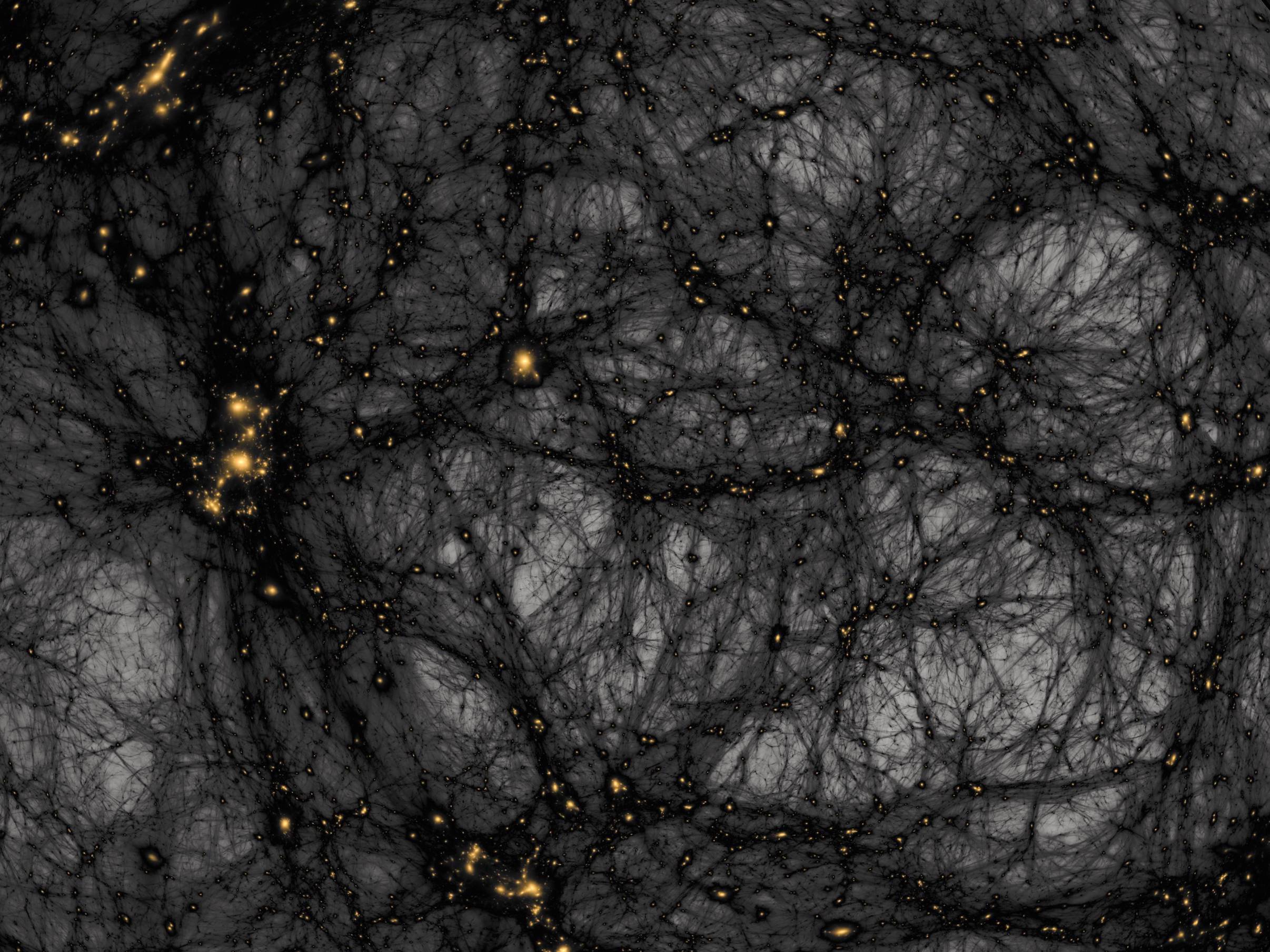1. Invisible to Light
Dark matter doesn’t emit, absorb, or reflect light, making it invisible to traditional telescopes. It interacts with electromagnetic radiation only through gravity, which is why it’s challenging to detect. Its presence is inferred by its gravitational effects on visible matter, like the rotation of galaxies. The fact that it is undetectable by conventional methods yet profoundly influences the universe challenges our understanding of matter and forces.
2. Only Detectable via Gravitational Effects
While invisible to light, dark matter’s presence is evident in the way galaxies rotate and the bending of light due to gravitational lensing. Its gravitational pull helps bind galaxies and galaxy clusters together. Without dark matter’s unseen influence, galaxies would fly apart, and large-scale structures in the universe wouldn’t hold together. This indirect detection is one of the greatest mysteries in cosmology.
3. It Makes Up 85% of the Universe’s Mass
Despite being invisible, dark matter constitutes around 85% of the total mass in the universe, with normal, visible matter making up just 15%. This imbalance is perplexing, as we don’t fully understand what dark matter consists of. Its immense mass also implies it plays a central role in shaping cosmic structures, yet its nature remains elusive.
4. Dark Matter is Non-Interactant with Ordinary Matter
Unlike regular matter, which interacts through the electromagnetic, weak, and strong forces, dark matter only interacts through gravity. It doesn’t form chemical bonds, emit radiation, or participate in typical particle interactions. This makes it even harder to detect or study, as its effect on ordinary matter is minimal except for gravitational influence.
5. Cold Dark Matter (CDM) and Structure Formation
Most theories propose that dark matter is “cold” (moving slowly compared to the speed of light). Cold dark matter helps form the structure of the universe by clumping together under gravity to create dark matter halos, around which galaxies and galaxy clusters form. This contrasts with “hot” dark matter, which would move too fast to allow structure to form. CDM is thought to be responsible for the vast cosmic web of galaxies.
6. Potential Particle Candidates (WIMPs and Axions)
While dark matter itself has never been observed directly, theoretical particles such as Weakly Interacting Massive Particles (WIMPs) or axions are proposed as potential candidates. WIMPs would interact via the weak force, while axions are light particles that could be produced in high-energy processes. These hypothetical particles are difficult to detect due to their extremely weak interactions with normal matter.
7. Dark Matter Halo Around Galaxies
Galaxies are thought to be surrounded by massive, invisible “halos” of dark matter. These halos extend far beyond the visible edge of galaxies and exert gravitational pull, affecting the motion of stars and gas. Dark matter halos account for the observed rotation curves of galaxies, where stars far from the galactic center rotate faster than expected, indicating the presence of unseen mass.
8. Dark Matter Doesn’t Decay
Unlike regular matter, dark matter particles are stable over cosmic timescales. If dark matter particles could decay, we would observe high-energy photons or other particles as a result, but no such signals have been detected. This stability of dark matter is puzzling because it suggests a different set of physical laws than those governing ordinary particles.
9. Interaction with Dark Energy
Dark matter is distinct from dark energy, which drives the accelerated expansion of the universe. While dark matter has mass and gravitational pull, dark energy is thought to have a repulsive effect. Despite these differences, dark matter and dark energy seem to coexist in the same cosmic space, influencing the universe in contrasting ways: dark matter shapes structures, while dark energy accelerates cosmic expansion.
10. May Have Anisotropic Distribution
Some models suggest that dark matter may not be evenly distributed across the universe. Instead, it could have anisotropic properties, meaning it might be concentrated in specific directions or vary in density depending on the cosmic location. This could explain certain large-scale structures, but the idea challenges our assumptions about uniformity in cosmology and complicates efforts to detect and study dark matter.
Each of these properties highlights how dark matter remains one of the most profound and bizarre phenomena in modern physics, continuing to challenge our understanding of the universe.
